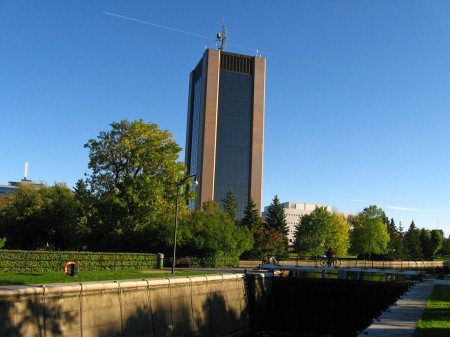A recent study conducted by the Zoological Society of London concluded that half of Europe’s amphibians could be extinct by 2050. There are two obvious ways to consider the news. Firstly, it is evidence of the enormously destructive effect human beings have on vulnerable ecosystems. Secondly, it raises questions about whether humanity itself will be able to survive the catastrophe is it creating. Amphibians have been around for 400 million years. While there have certainly been times in which a large proportion of them have died off, those times have been been listed among the catastrophic extinction events that have punctuated the history of life on Earth.
In short, the impact of the global economy is becoming comparable to that of major meteor strikes, mass volcanic events, large changes in sea level, and severe changes in atmospheric composition that have occurred in the past. For those who do not believe that humanity inhabits some special protected position in the cosmos, that seems like cause for very significant concern.


Is that the Leaning Tower of Arts or did I have too much wine last night?!
That is the tower at Carleton that contains NPSIA, among other things.
Poor show, humanity. Poor show.
Yesterday, researchers on board the British research ship the James Clark Ross said they had counted about 250 methane plumes bubbling from the seabed in an area of about 30 square miles in water less than 400 metres (1,300 feet) deep off the west coast of Svalbard. They have also discovered a set of deeper plumes at depths of about 1,200 metres at a second site near by. Analysis of sediments and seawater has confirmed the rising gas is methane, said Professor Graham Westbrook of Birmingham University, the study’s principal investigator.
“The discovery of this system is important as its presence provides evidence that methane, which is a greenhouse gas, has been released in this climactically sensitive region since the last ice age,” Professor Westbrook said. An analysis of sediments taken from the seabed show that the gas is coming from methane hydrates – ice-like crystals where molecules of the gas are captured in “cages” made of water molecules, which become unstable as water pressures fall or temperatures rise.
Holocene extinction event
From Wikipedia, the free encyclopedia
The Holocene extinction event is the widespread, ongoing mass extinction of species during the modern Holocene epoch. The large number of extinctions span numerous families of plants and animals including mammals, birds, amphibians, reptiles and arthropods; a sizeable fraction of these extinctions are occurring in the rainforests. This extinction event is sometimes referred to as the sixth extinction following the previous five extinction events.
In a perverse way, you could argue that this could be good in the long term.
Humanity is killing off the species we are indifferent to, while spreading the ones that are directly helpful to us (crops, etc).
The long-term outcome may be to make nature more accommodating to humanity.
I don’t think that is a very sensible way to look at it.
You can think of plants and animals as providing ‘ecosystem services’ for humanity. This includes everything from filtering water to producing food to keeping the air breathable. Most of the living things that provide these services are not actively raised or protected by human beings. Indeed, we tend to behave rapaciously towards them.
It would theoretically be possible to engineer a biosphere that does a better job of providing what humanity wants, but the way to achieve that is not through indiscriminate pollution, deforestation, and ever more anthropogenic climate change.
Mammals facing extinction threat
By Richard Black
Environment correspondent, BBC News website, Barcelona
At least 25% of the world’s mammal species are at risk of extinction, according to the first assessment of their status for a decade.
The Red List of Threatened Species says populations of more than half of mammalian species are falling, with Asian primates particularly at risk.
This year’s Red List looks at 5,487 mammals, and concludes that 1,141 are currently on the path towards disappearance.
This may be an under-estimate, the authors caution, as there is not enough data to make an assessment in more than 800 cases. The true figure could be nearer to one- third.
“Within our lifetime, hundreds of species could be lost as a result of our own actions, a frightening sign of what is happening to the ecosystems where they live,” said Julia Marton-Lefevre, director-general of the International Union for the Conservation of Nature (IUCN) which publishes the Red List.